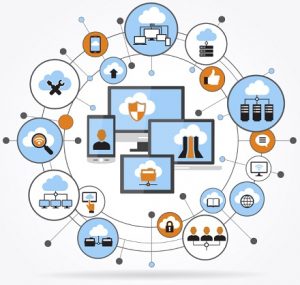
If you’ve outgrown your current accounts system or are looking to move on from spreadsheets, replacing your finance software isn’t as hard as you may think.
Here, we help you understand the benefits of an Enterprise Resource Planning (ERP) solution, demonstrate the advantages of the Cloud, and provide you with questions to ask when evaluating your options.
Customer demand vs. business software requirement
As customer demand increases, the emphasis is on businesses to undertake digital transformation to help adapt to the changing pace of the modern workplace.
Becoming more agile and better equipped to adjust your business model when required, it’s important to evaluate your current finance solution and compare it to an effective ERP that can:
- Automatically pull your systems and processes together so your people don’t have to do it manually
- Give you a complete picture across your business, with reports as and when you need them on what you specifically need them for
- Get you up and running quickly, so change doesn’t get in the way of your day-to-day processes.
If your system doesn’t do this, then information silos, disconnected systems and manual processes will hinder your ability to deliver the service and experience your customers expect – putting your business at risk.
With Microsoft Dynamics and the Cloud, you can create efficiency across your business processes which in turn helps the management team make informed business decisions.
Signs your finance software or legacy systems are putting your business at risk

As your business grows in size and complexity, the tools that once supported you may no longer do so.
Whether it’s lost sales, customer dissatisfaction or compliance risks, e.g. Making Tax Digital, failing to update your technology can be a costly decision in the medium to long term.
If you recognise any of the following warning signs, the time has come to make a change:
- Manual processes are error prone due to duplication and manual entry
- Departments can’t keep up with increasing demand despite added headcount
- Creating and configuring reports is too complicated and often doesn’t give reliable business intelligence needed
- Incomplete or incorrect information creates customer dissatisfaction and lost sales
- Wasting time dealing with multiple systems that can’t communicate/transfer data to one another easily
- Productivity is lost, spending valuable time switching back and forth between multiple applications and disconnected systems.
The Cloud

There has never been a better time to move to the Cloud.
An affordable way to expand capabilities, the Cloud creates greater efficiency and mobility, as well as preparing you for changing business conditions – using Azure private Cloud, for example.
However, the decision to move can still, understandably, be a difficult one to make. To help you work out what’s best for you, below are few differences to look out for:
Comprehensive integration
- One solution to manage financials, sales, services and operations, with the ability to connect applications like payroll, banking apps, CRM systems or custom APIs.
Connecting your entire business
- Automatically pull systems and processes together so your people don’t have to
- Automate and secure business processes
- Improve productivity and get more done with easy-to-create workflows, PowerApps, audit trails and enterprise-level security.
Providing an end-to-end view of your business
- Centralise data from accounting, sales and purchasing, inventory and customer interactions to get an accurate end-to-end view of your business.
- All data stays up-to-date so you can spot trends, prevent issues, and deliver great customer experiences.
Enabling mobility
- Empower a mobile workforce by delivering the same experience across devices, regardless of users’ location.
Why choose Microsoft Dynamics 365 Business Central

Business Central (BC) is a business management solution that’s connecting people and processes like never before. From day one, BC makes ordering, selling, invoicing and reporting quicker and easier.
Turning your multiple disconnected systems into one, you can boost efficiency with integration using familiar Office tools like Outlook.
Connect your business
Deploy one solution to manage your financials, sales, services and operations with the ability to connect applications like payroll, banking apps, CRM systems or custom APIs.
Outlook isn’t just for email and calendars anymore. Now you can go from quote to cash without switching applications.
Set up customers or vendors, create quotes, process orders and submit invoices without leaving your inbox. Easily export data and create outgoing documents directly in Word and Excel.
Make better business decisions
Centralise your data from accounting, sales and purchasing, inventory and customer interactions to get an accurate end-to-end view of your business.
All data stays up to date so you can spot trends, prevent issues, and deliver great customer experience.
Start and grow easily
Handle the most common business processes from day one, like quotes, orders, invoicing, purchasing, cash management, and reporting.
You can start with only what you need and grow at your own pace, using flexible applications you can easily adapt to change and manage growth.
Working locally to help you with your implementation and offer ongoing support when needed, get in touch with TVision to find out how we and Microsoft Dynamics can help you.
Watch some of our webinars to learn more about the functionality you could benefit from by moving to Microsoft Dynamics.

